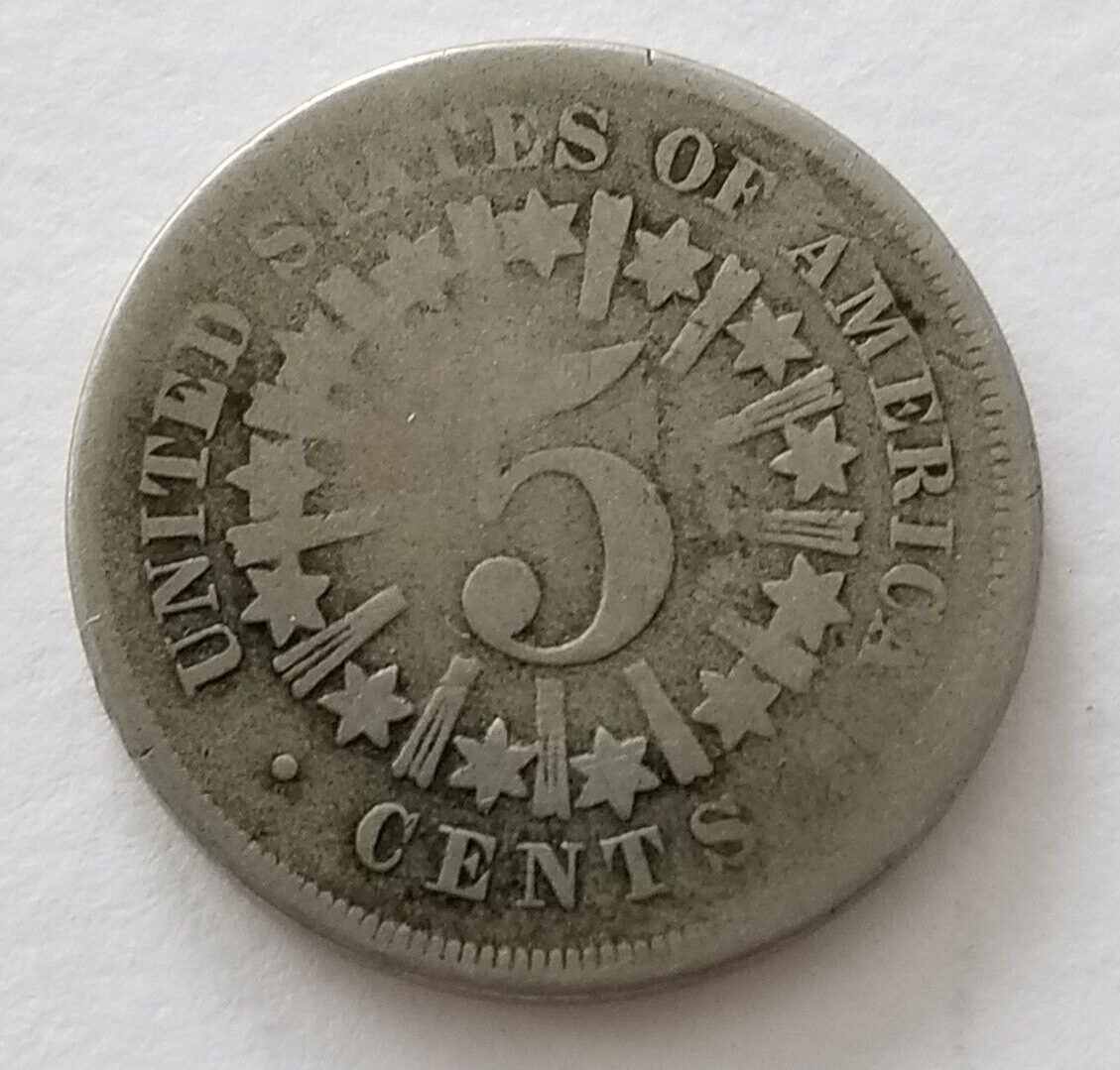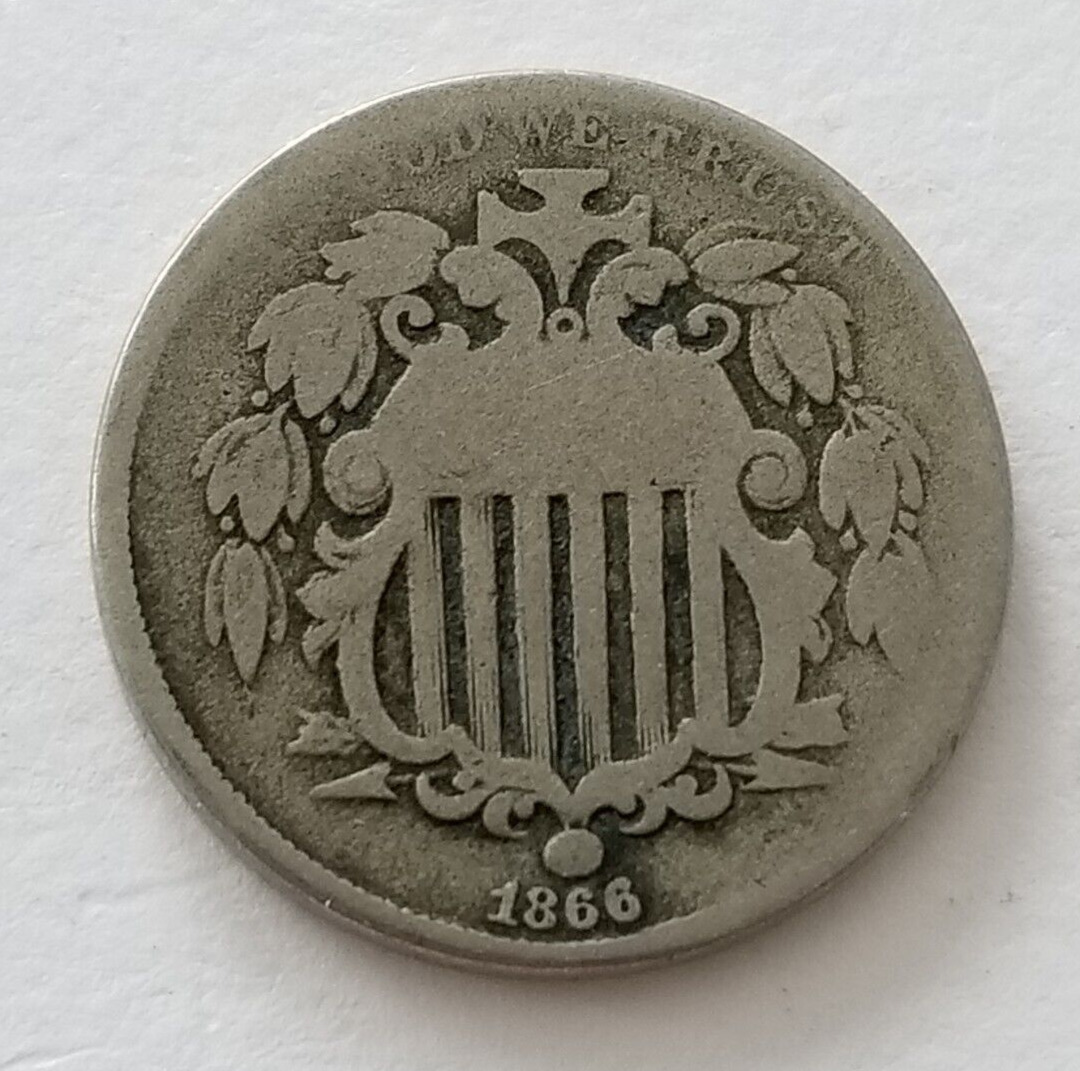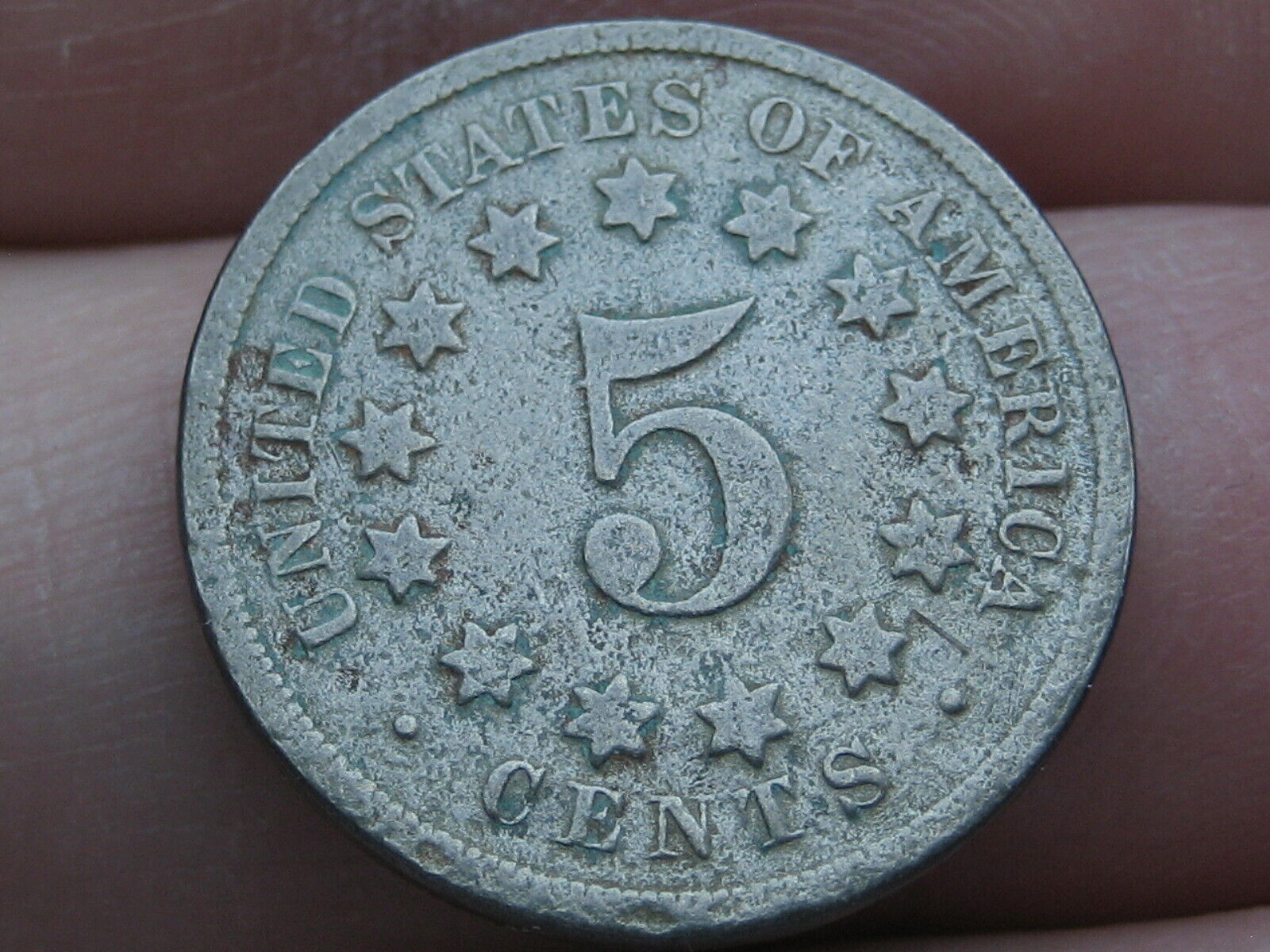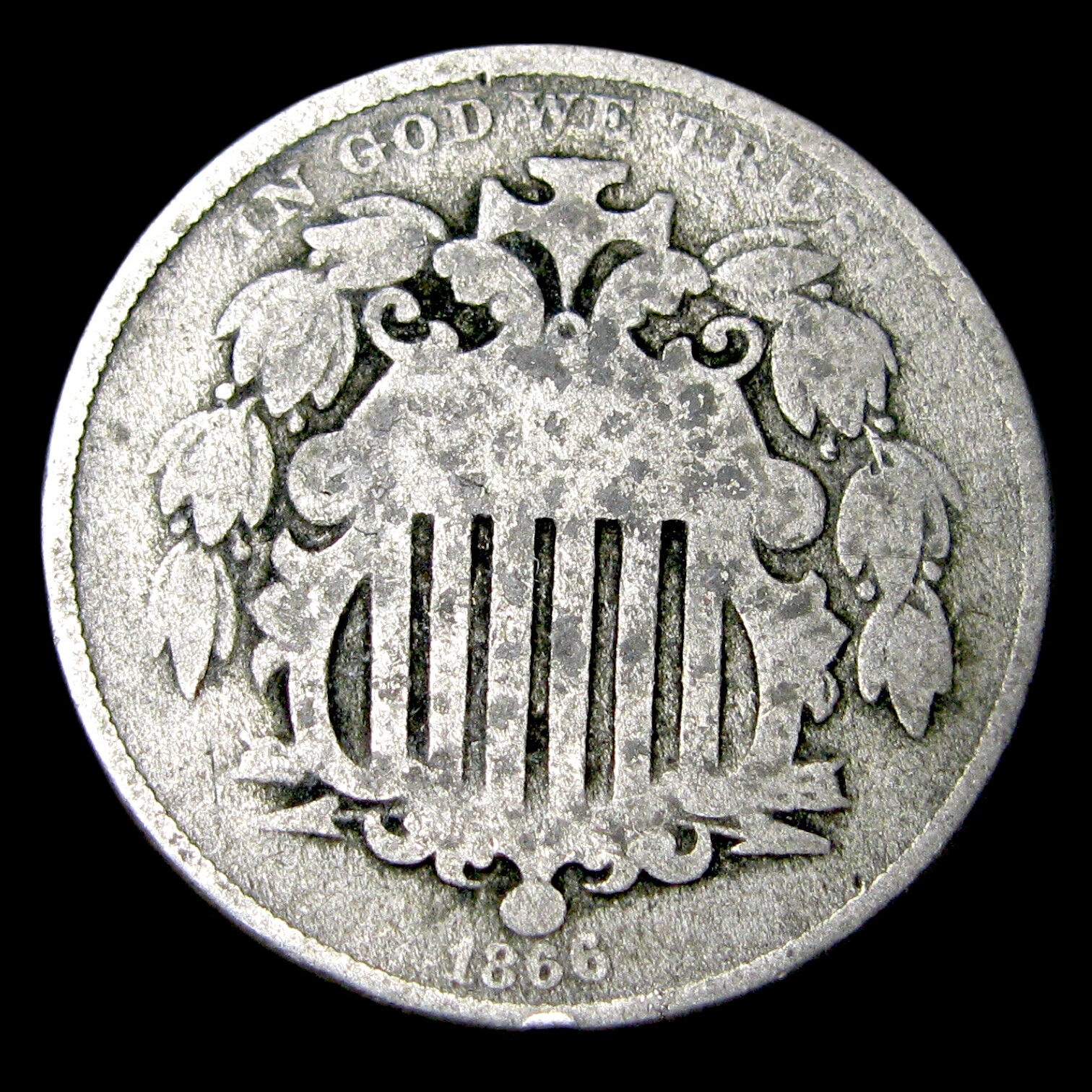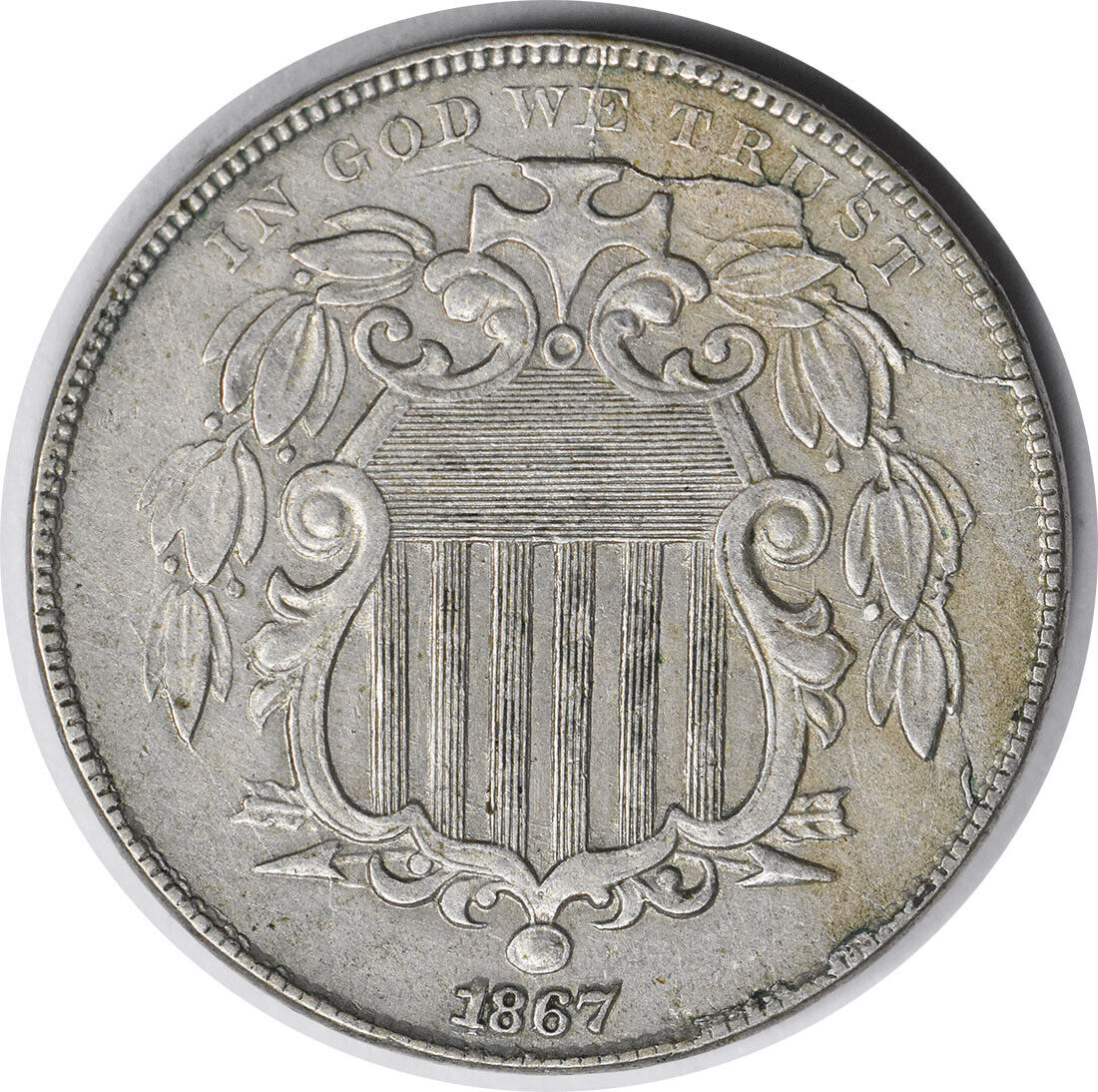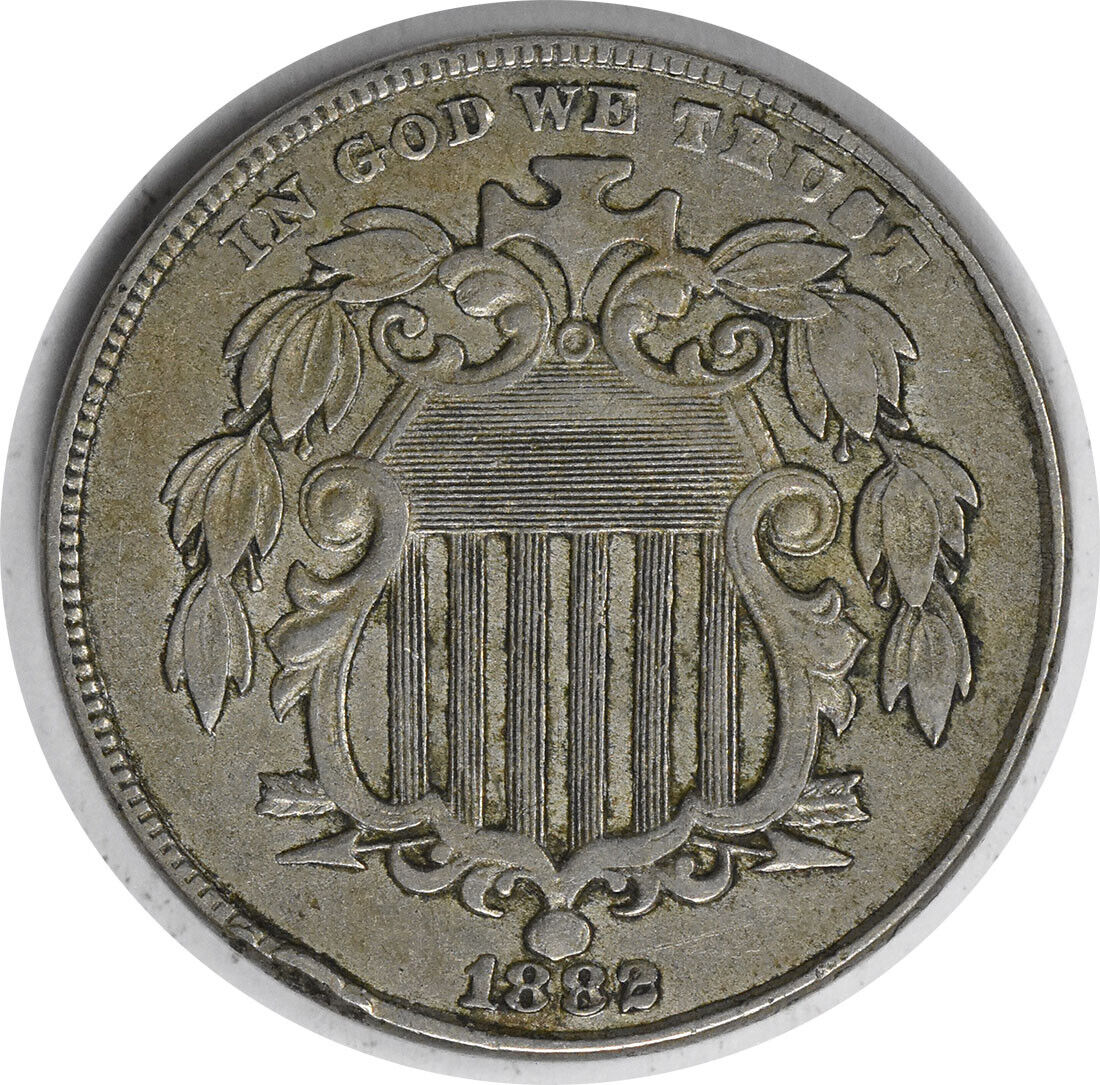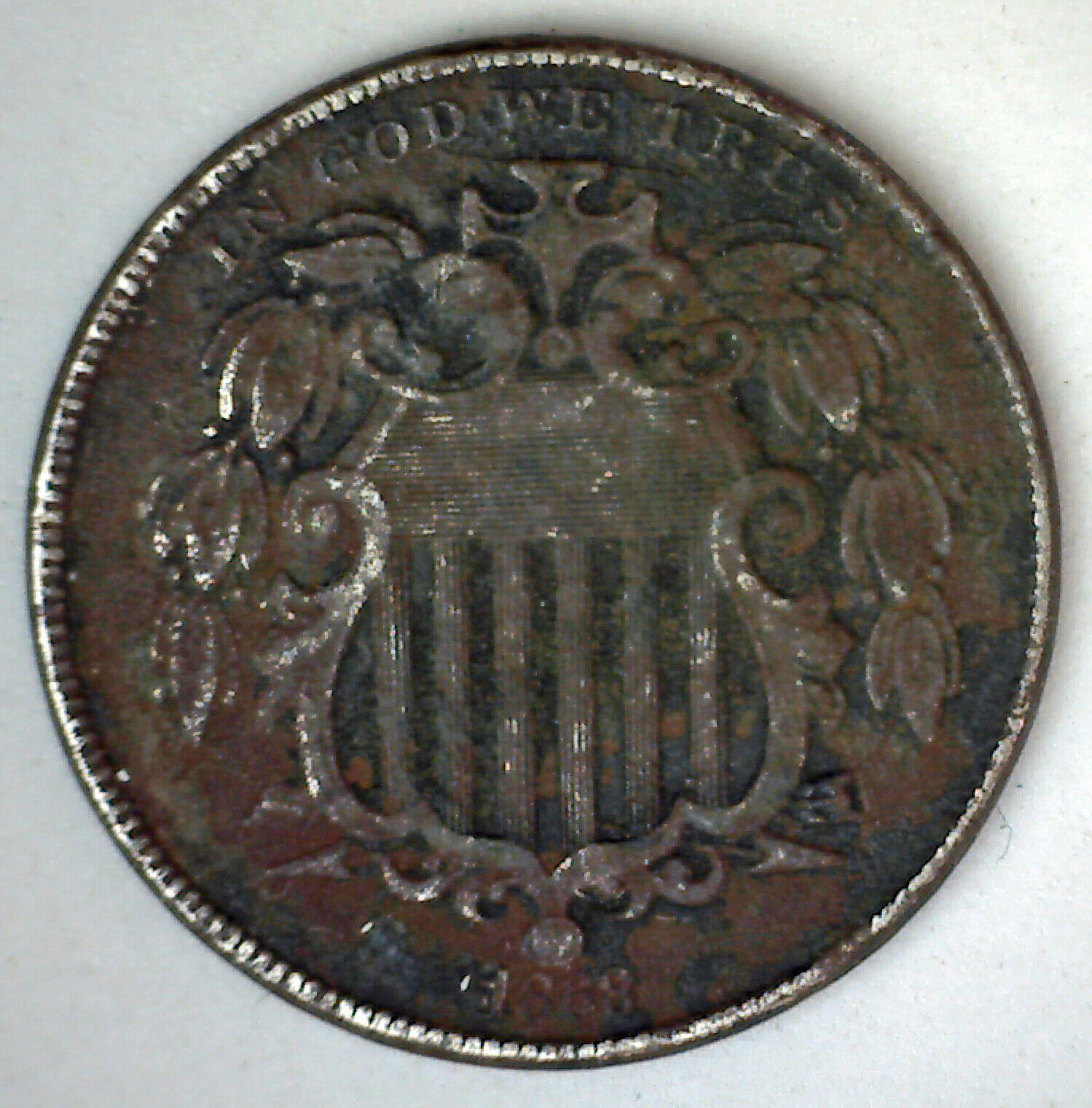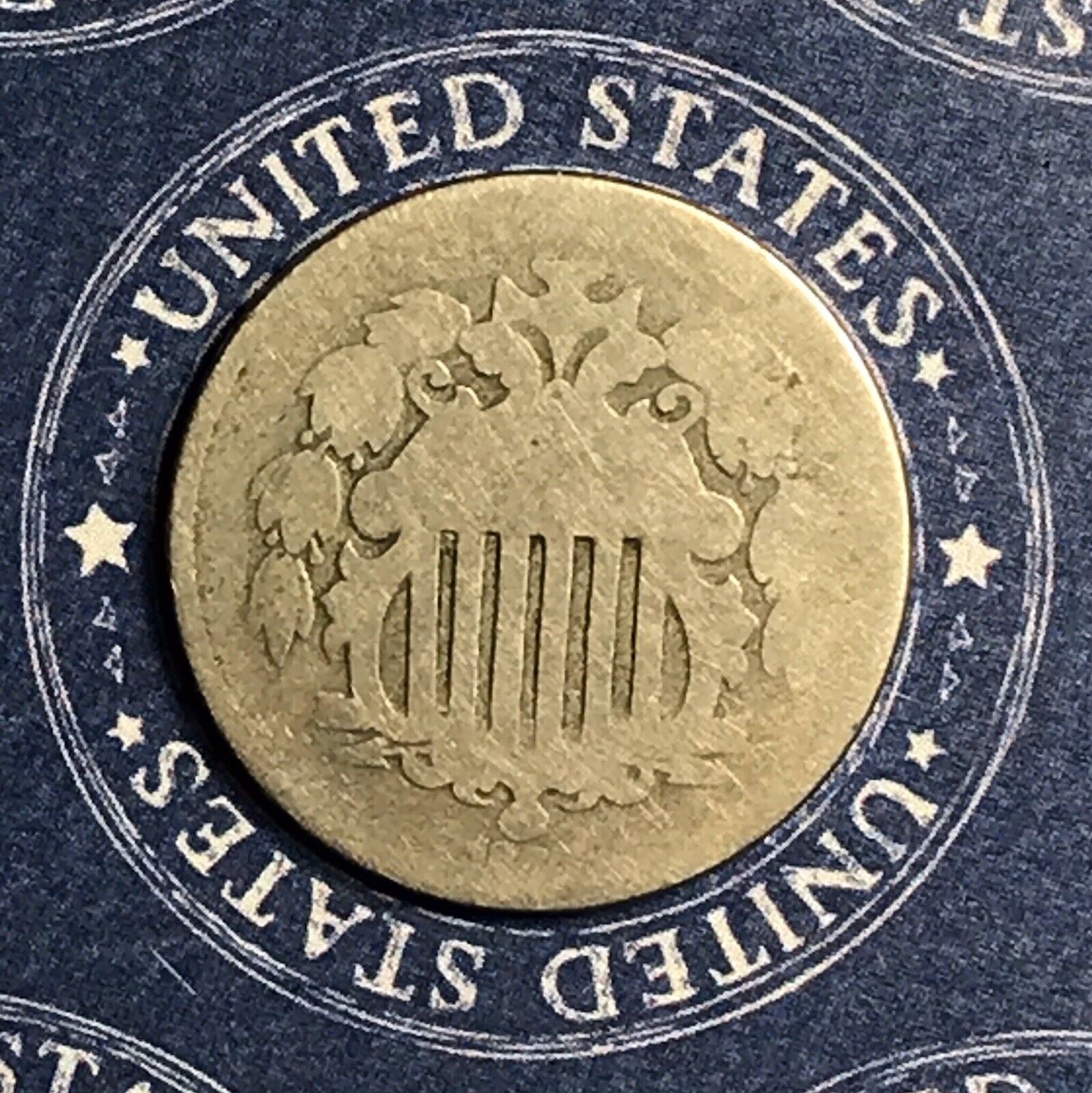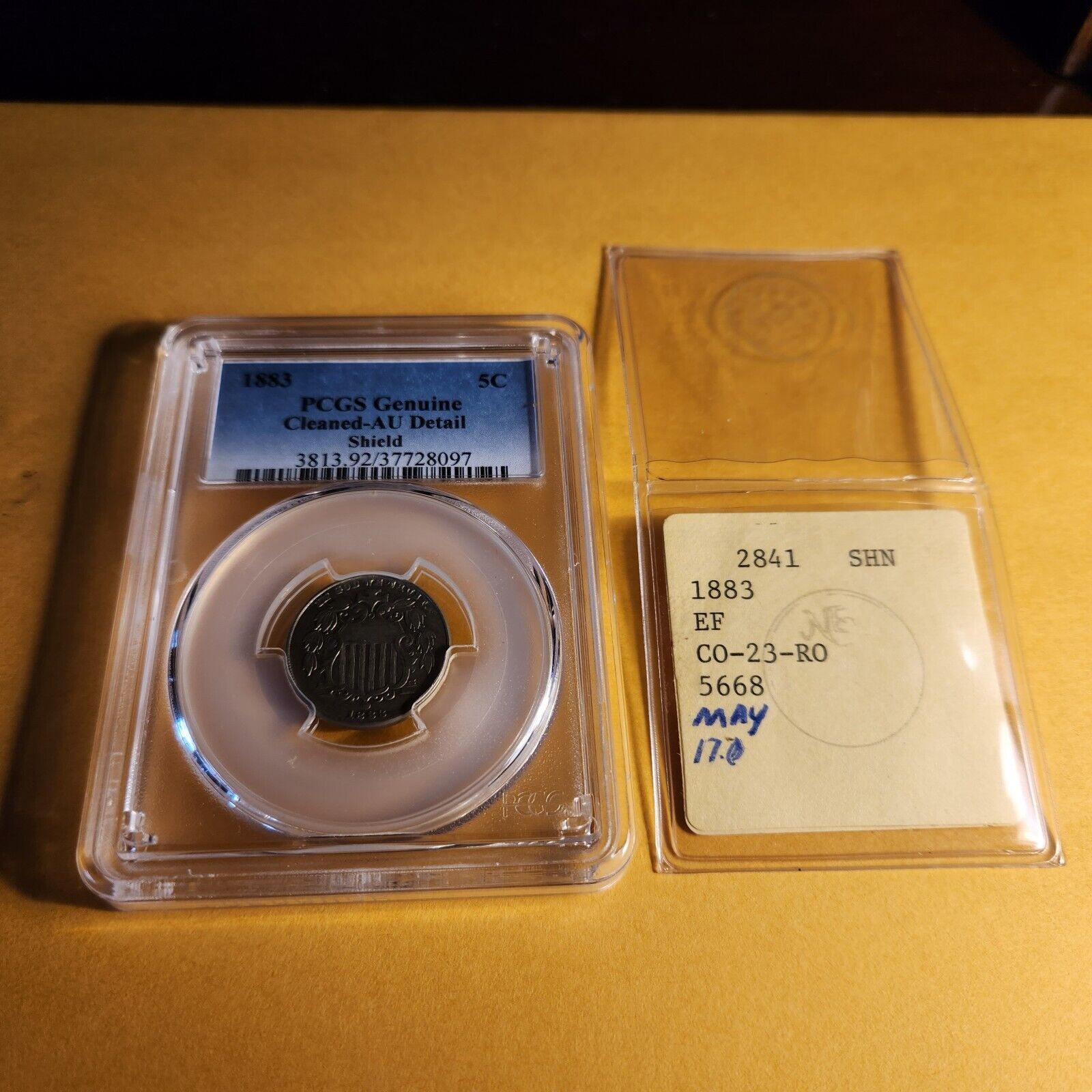-40%
1866 Shield Nickel - US Philadelphia Mint
$ 8.91
- Description
- Size Guide
Description
Florence Gold and Silver Exchange of Florence, Co is pleased to present:-- 1866 Shield Nickel - US Philadelphia Mint
Shield Nickel -- The Shield nickel was the first United States five-cent piece to be made out of copper-nickel, the same alloy of which American nickels are struck today. Designed by James B. Longacre, the coin was issued from 1866 until 1883, when it was replaced by the Liberty Head nickel. The coin takes its name from the motif on its obverse, and was the first five-cent coin referred to as a "nickel"—silver pieces of that denomination had been known as half dimes.
5 Cents
75% Copper 25% Nickel
Philadelphia Mint
More Nickels
S/h and insurance
Our Store
Nickels
Small Cents
Large Cents
Two Cents
Three Cents
Gold & Silver Bullion
Indian Head Cents
United State Coins
Coins & Paper Money
Ebay Longtime Member since: Nov 2000 (22 years)
Cont:
Obverse design is "one of the most patriotic motifs in American coinage". Based on the coat of arms from the Great Seal of the United States of America, Longacre's design focused on the shield, or escutcheon as a defensive weapon, symbolizing strength and self-protection through unity. The upper part of the shield, or "chief", symbolizes Congress, while the 13 vertical stripes, or "paleways" symbolize the states; consequently the entire escutcheon symbolizes the strength of the federal government through the unity of the states. The crossed arrows, whose ends are visible near the bottom of the shield, symbolize nonaggression, but imply readiness against attack. The laurel branches, taken from Greek tradition, symbolize victory. In heraldic engraving, vertical lines represent red, clear areas white and horizontal lines blue, thus the escutcheon is colored red, white and blue and is meant to evoke the American flag. Bowers does not consider the reverse design an artistic work, but one which is purely mechanical, obtained by punching characters and devices into a steel hub.
